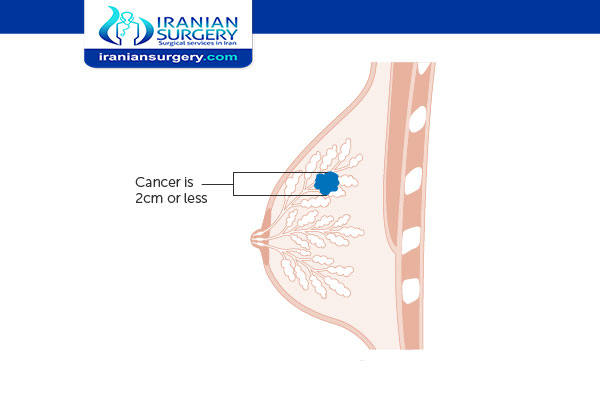Breast Cancer Stage 1
Breast Cancer Treatment Stage 1
Breast cancer stages range from 0-4. Each stage has different symptoms and treatment options.
Breast cancer has four stages, and a doctor uses the TNM staging system to identify which of these four stages the breast cancer has reached.
The letters TNM mean the following:
. T stands for tumor and indicates how much of the breast tissue is involved.
. N stands for nodes and indicates whether cancer has spread to the lymph nodes.
. M stands for metastasis and indicates whether cancer has spread to other parts of the body.
The TNM staging system also uses numbers. The numbers from 0-4 determine how advanced the cancer is.
The system is overseen by the American Joint Committee on Cancer (AJCC). This means all cancer doctors describe and classify the stages of cancer in the same way.
To determine which stage a person’s breast cancer has reached, a doctor will perform tests. Tests include blood tests, CT and PET scans, MRI’s, X-rays, including a mammogram, and ultrasounds.
Read more about : Stage 2 breast cancer treatment timeline
Read more about : Early stage breast cancer treatment
Stage 1 breast cancer
Stage 1 breast cancer means the cancerous cells are invading the surrounding breast tissue. Stage 1 breast cancer has two subcategories – 1A and 1B.
People with stage 1A breast cancer have breast cancer with:
. A tumor measuring no more than 2 centimeters (cm) in diameter that has not spread outside the breast.
People with stage 1B breast cancer have invasive breast cancer that can present as:
. No tumor in the breast, but the cancerous cells have formed into clusters that are between 0.2–2 (millimeters) mm in diameter and may also be in the lymph nodes.
. A tumor no larger than 2 cm growing in the breast alongside small groups of cancer cells measuring between 0.2–2 mm developing in the lymph nodes.
If this is the case and the cancer is ER+ or PR+, a doctor is still likely to classify it as stage 1A cancer.
Microscopic invasion is where cancer cells have begun to spread outside the milk duct lining or lobule. If microscopic invasion is present, doctors may still classify cancer as stage 1 breast cancer, providing these cells do not measure more than 1mm.
Treatment for stage 1 breast cancer
Doctors can offer a variety of treatment options for stage 1 breast cancer, although surgery is the primary treatment.
. Surgery
A lumpectomy or mastectomy are both viable surgical options for people with stage 1 breast cancer. A doctor will decide what surgery is most appropriate depending on the location of the primary tumor, how large it is, the size of the breast, family history, genetics, and the person’s preference.
In a lumpectomy, the surgeon removes the cancerous cells and spares the rest of the breast. A lumpectomy may be performed as an outpatient procedure. This means you can go home shortly after the surgery and won’t need to stay in a hospital overnight.
A mastectomy is the surgical removal of the breast. It’s recommended when DCIS is found throughout the breast. For mastectomy, reconstruction of the breast can begin at the same time if wanted, or after additional treatment is completed.
Biopsy of the lymph nodes will probably be performed at the same time.
. Radiation therapy
Radiation therapy is a standard treatment for stage 1 breast cancer. However, a doctor may not recommend radiation therapy for people over 70 years old, particularly if hormone therapy is suitable.
. Hormone therapy
If the breast cancer is ER+ or PR+, hormone therapy may be effective. Hormone therapy works by preventing the growth of estrogen, which helps cancer grow. Hormone therapy can reach cancer cells in the breast as well as other areas of the body and reduces the risk of the cancer coming back.
. Chemotherapy
Before recommending chemotherapy, a doctor will test to see whether the cancer is hormone receptive.
If the test results show that the cancer is not receptive to estrogen and progesterone or to another protein called human epidermal growth factor receptor 2 (HER2), it is known as triple-negative breast cancer (TNBC).
Hormone therapy is ineffective against this cancer type, and people who have TNBC will usually need chemotherapy.
However, some people who do have ER+ or PR+ breast cancer may still undergo chemotherapy. A doctor may need to run a test on the tumor to help decide whether chemotherapy is appropriate.
Sometimes, doctors will recommend that people who have HER2+ breast cancer use Herceptin, which is a targeted therapy, alongside chemotherapy.
Read more about 2nd iui success rate
Read more about Virgin tightening surgery before and after
Read more about Ovarian cyst size chart
Breast cancer treatment considerations
The stages of breast cancer give a doctor an indication of how developed the breast cancer is and the kind of treatment options that may be effective.
There are, however, other factors that doctor’s take into consideration when determining how successful a specific type of breast cancer treatment might be.
These include:
. Age: Those under 40 tend to have more aggressive breast cancers.
. Pregnancy: Doctors may delay chemotherapy until the second or third trimester and delay hormone and radiation therapy until after the baby is born.
. How fast cancer grows and spreads: More aggressive cancers require more aggressive treatments.
. Family history: People whose close relatives have experienced breast cancer are more likely to experience it themselves.
. Genetic mutation status: If someone tests positive for the breast cancer genes known as BRCA1 (Breast Cancer gene one) and BRCA2 (Breast Cancer gene two), their risk of developing breast cancer increases significantly. Some people may require tests for other genes associated with breast cancer.


